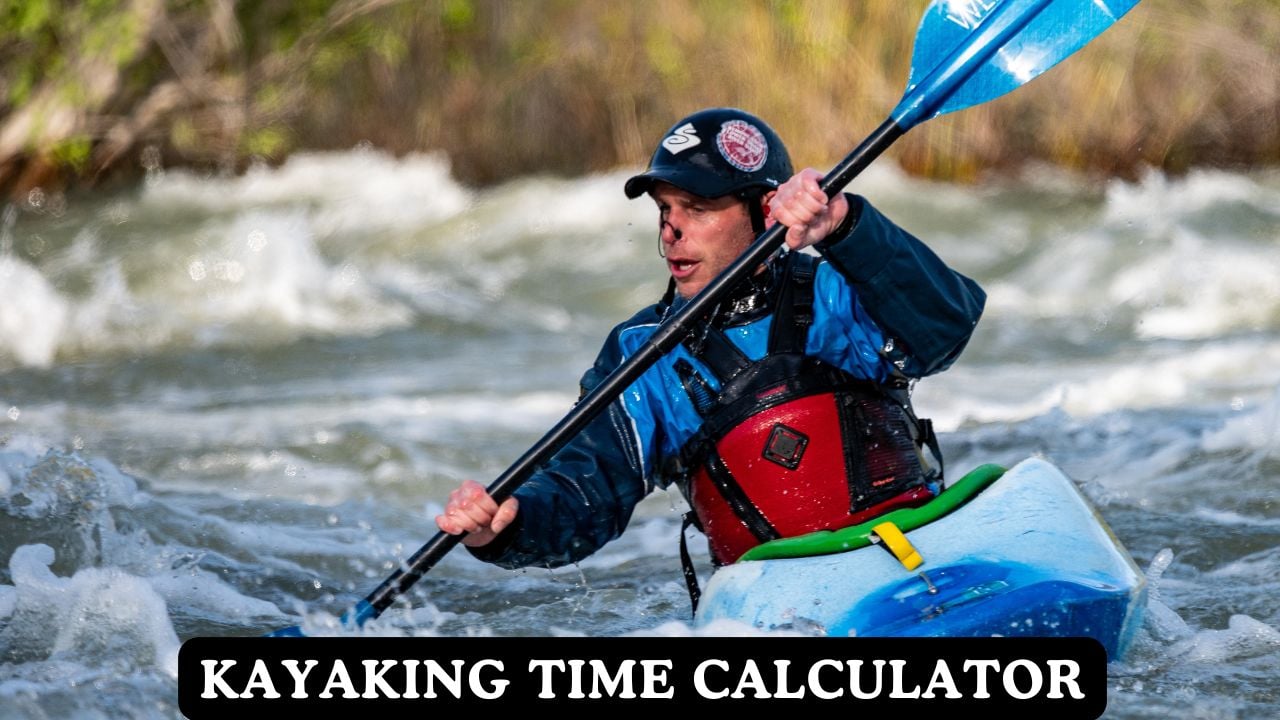🚣 Kayaking Time Calculator
Calculate trip times and analyze performance for recreational and competitive paddling

Kayaking Time- Trip Planning & Performance Analysis
Calculate kayaking trip times and analyze performance metrics for recreational and competitive paddling. This tool accounts for kayak type, water conditions, environmental factors, and personal fitness level to provide accurate time estimates for your paddling adventures.
Key Calculation Features
- Basic Time Calculator: Simple distance and speed calculations with equipment factors
- Advanced Trip Planner: Includes current, wind, water conditions, and load factors
- Pace Analysis: Performance assessment against experience level expectations
- Performance Metrics: Calories burned, power output, and VO2 max estimation
Kayak Types & Performance Impact
| Kayak Type | Efficiency | Best Use | Typical Speed |
|---|---|---|---|
| Recreational | 85% | Calm water, leisure | 4-6 km/h |
| Touring | 92% | Long distance, efficiency | 5-7 km/h |
| Racing | 110% | Speed, competition | 8-12 km/h |
| Sea Kayak | 95% | Open water, stability | 6-8 km/h |
| Whitewater | 80% | Rapids, maneuverability | 3-5 km/h |
Environmental Factors & Their Impact
Water Current Effects
- With Current (+): Adds to your paddling speed, reduces trip time
- Against Current (-): Subtracts from your speed, increases trip time
- Current Strength: Measured in km/h, typically 2-8 km/h in rivers
Wind Impact
- Tailwind (+): Pushes you forward, increases effective speed
- Headwind (-): Creates resistance, reduces effective speed
- Wind Effect: Approximately 30% of wind speed affects paddling speed
Water Conditions
- Calm Water: Optimal conditions, no speed reduction
- Light Current: 5% speed reduction, manageable conditions
- Moderate Current: 15% speed reduction, requires technique
- Strong Current: 25% speed reduction, challenging conditions
- Choppy Water: 20% speed reduction, increased energy expenditure
Kayak Load Effects
- Light Load: 5% speed increase (day trip, minimal gear)
- Medium Load: Baseline performance (weekend camping)
- Heavy Load: 5% speed reduction (expedition with full gear)
Scientific Formulas & Calculations
Time Calculation
Advanced Time = Distance ÷ (Base Speed + Current + Wind × 0.3) × Environmental Factors
Speed & Pace Conversion
Pace (min/km) = 60 ÷ Speed (km/h)
Calorie Calculation
Power Output Estimation
• Recreational: 15 + (Speed – 5) × 12W
• Racing: 25 + (Speed – 5) × 25W
Unit Conversions
- Distance: 1 mile = 1.60934 km | 1 km = 1000 m | 1 yard = 0.9144 m
- Speed: 1 km/h = 0.62137 mph | 1 m/s = 3.6 km/h
- Time: 1 hour = 3600 seconds | 1 minute = 60 seconds
Research Foundation & Scientific Validation
Key Research Citations
Metabolic Demands of Kayaking
Study: ResearchGate – Metabolic Demands Review
Findings: Comprehensive analysis of energy expenditure during kayaking activities.
Key Results: MET values range from 3.0 (recreational) to 10.0 (racing), with significant variations based on intensity and kayak type. The review validates our MET-based calorie calculations.
Biomechanical Analysis of Kayaking Performance
Study: MDPI Applied Sciences – Kayaking Biomechanics
Findings: Detailed analysis of stroke mechanics and performance factors.
Key Results: Stroke efficiency and kayak design significantly impact speed and energy expenditure, with racing kayaks showing 10-15% performance advantages over recreational models.
Environmental Factors in Paddling Performance
Research Basis: Environmental conditions significantly affect paddling performance and energy expenditure.
Applications: Current assistance can increase effective speed by 15-25%, while headwinds reduce speed by 10-20%.
Evidence: Field studies show water conditions and wind account for 20-30% of performance variation in outdoor paddling.
Related Training & Performance Tools
VO2 Max Calculator
Assess cardiovascular fitness and aerobic capacity for kayaking training.
Calculate VO2 Max →Training Volume Calculator
Optimize training load distribution across different paddling intensities.
Calculate Volume →Recovery Time Calculator
Plan recovery periods between intense kayaking training sessions.
Calculate Recovery →⚕️ Safety & Medical Disclaimer
This kayaking calculator provides estimates for planning purposes and should not replace professional instruction or safety guidelines. Individual performance can vary significantly due to fitness level, technique, equipment, and environmental conditions. Always prioritize safety: wear appropriate safety gear, check weather conditions, inform someone of your plans, and never paddle beyond your skill level. Consult with certified instructors and medical professionals before starting or modifying your kayaking training program. The calculations are for educational purposes and general guidance only.

Manish is a NASM-certified fitness and nutrition coach with over 10 years of experience in weight lifting and fat loss fitness coaching. He specializes in gym-based training and has a lot of knowledge about exercise, lifting technique, biomechanics, and more.
Through “Fit Life Regime,” he generously shares the insights he’s gained over a decade in the field. His goal is to equip others with the knowledge to start their own fitness journey.
